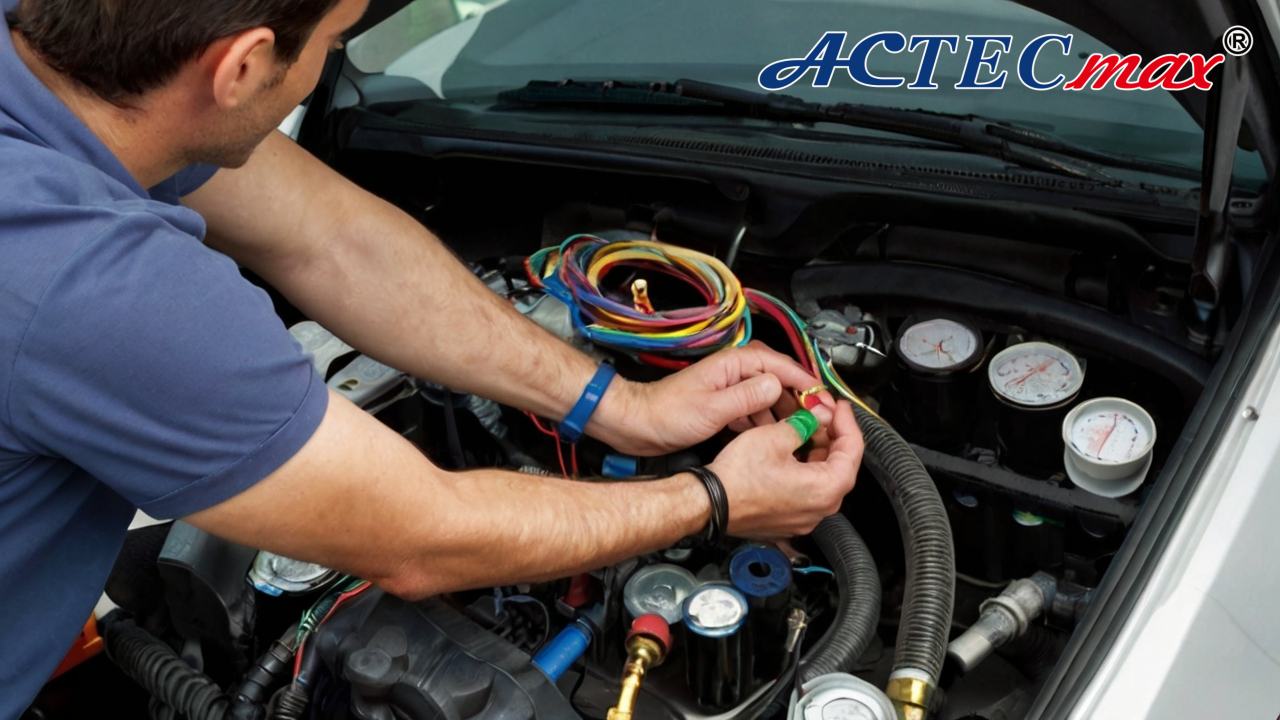
How to Discharge Car AC at Home: A DIY Guide
Discharging your car’s A/C system is sometimes necessary if you’re planning to repair or replace components in the A/C system, or if you’re troubleshooting problems such as weak cooling or unusual noises. While it’s generally recommended to discharge an A/C system in a professional setting, it’s possible to safely release refrigerant from a car’s A/C system with the right tools and knowledge.
In this guide, we’ll explain how to discharge car AC at home and share essential tips to ensure you’re doing it safely and responsibly.
Important: Why Discharging Car A/C Needs Caution
Refrigerants used in car air conditioning systems, such as R134a or R1234yf, are harmful to the environment and, if improperly handled, can cause health hazards. Releasing refrigerant directly into the air is illegal in many places, as it contributes to greenhouse gas emissions. Always check local regulations and use appropriate equipment to ensure safe handling of refrigerants.
If you’re not experienced with A/C systems, consider consulting a professional for this task to avoid any health or legal issues.
When Should You Discharge Your Car A/C System?
Discharging a car’s A/C system may be necessary if:
- You need to repair or replace the A/C compressor, condenser, or other components.
- You’re experiencing poor cooling or system blockages that need inspection.
- You want to recharge the A/C system but need to clear the old refrigerant first.
What You’ll Need to Discharge Car AC at Home
To discharge the A/C system safely, you’ll need the following tools and materials:
- A/C Recovery Machine – An A/C recovery machine is designed to safely collect refrigerant from the A/C system. This is the safest and most environmentally-friendly way to discharge the system.
- Personal Protective Equipment (PPE) – Wear gloves, goggles, and long sleeves to protect against potential refrigerant exposure.
- Refrigerant Recovery Tank – If you’re using an A/C recovery machine, connect it to a recovery tank to collect refrigerant.
- A/C Manifold Gauge Set – This gauge helps monitor system pressure and can confirm that refrigerant has been successfully removed.
- A Well-Ventilated Area – Always work in an area with proper ventilation when handling refrigerants.
Step-by-Step Guide on How to Discharge Car AC at Home
Here’s how to safely discharge your car A/C system at home:
Step 1: Set Up the A/C Recovery Machine
- Connect the A/C recovery machine to a recovery tank. The tank will collect refrigerant from the car’s A/C system without releasing it into the atmosphere.
- Make sure all connections are secure to prevent refrigerant leaks during recovery.
Step 2: Attach the Manifold Gauges
- Connect the low-pressure and high-pressure lines of the manifold gauge to the corresponding ports on your car’s A/C system. These ports are typically located on the larger (low pressure) and smaller (high pressure) A/C lines.
- Attach the middle hose from the manifold gauge to the input on the recovery machine.
Step 3: Start the Recovery Process
- Turn on the A/C recovery machine and open the valves on your manifold gauge set.
- The machine will begin pulling refrigerant from the car’s A/C system into the recovery tank. The process can take several minutes, depending on the amount of refrigerant in the system.
- Monitor the pressure on the manifold gauges. When the pressure reaches zero, it indicates that the refrigerant has been removed.
Step 4: Verify Complete Discharge
To ensure the system is fully discharged, check the gauges for both the low and high-pressure sides. They should both read zero, indicating no refrigerant is left in the system. You may also repeat the recovery process to confirm all refrigerant has been evacuated.
Step 5: Close the Valves and Disconnect
Once the pressure is at zero, close the manifold gauge valves and turn off the recovery machine. Disconnect the hoses carefully, ensuring no refrigerant escapes.
Important Safety and Environmental Tips
- Never discharge refrigerant directly into the air: This can cause harm to the environment and may be illegal. Use a recovery machine to properly capture refrigerant.
- Check for leaks before and after discharging. Leaks can compromise system efficiency and lead to refrigerant loss.
- Dispose of refrigerant properly: Collected refrigerant should be taken to an authorized disposal or recycling facility.
- Handle with care: Refrigerants are under pressure and can cause injury if handled incorrectly. Always wear PPE to protect your skin and eyes.
When to Seek Professional Help
While this guide provides a safe method to discharge your car A/C system, there are certain situations where you should consult a professional:
- Lack of proper equipment: If you don’t have access to an A/C recovery machine, visit a certified mechanic to avoid any safety or environmental issues.
- Potential system issues: If your A/C system has persistent issues or needs in-depth repair, a professional can offer additional diagnostic services.
- Unfamiliarity with A/C systems: A/C systems can be complex, and without the right experience, discharging can be challenging.
Conclusion
Learning how to discharge car AC at home is useful for minor maintenance and repairs, but it’s important to follow the correct procedure to protect both yourself and the environment. Using an A/C recovery machine is the most effective way to safely and legally discharge refrigerant, ensuring no harmful gases are released. If you’re unsure about handling refrigerants, reach out to a professional for guidance.
Following this guide carefully will ensure your A/C system is discharged correctly and safely.
